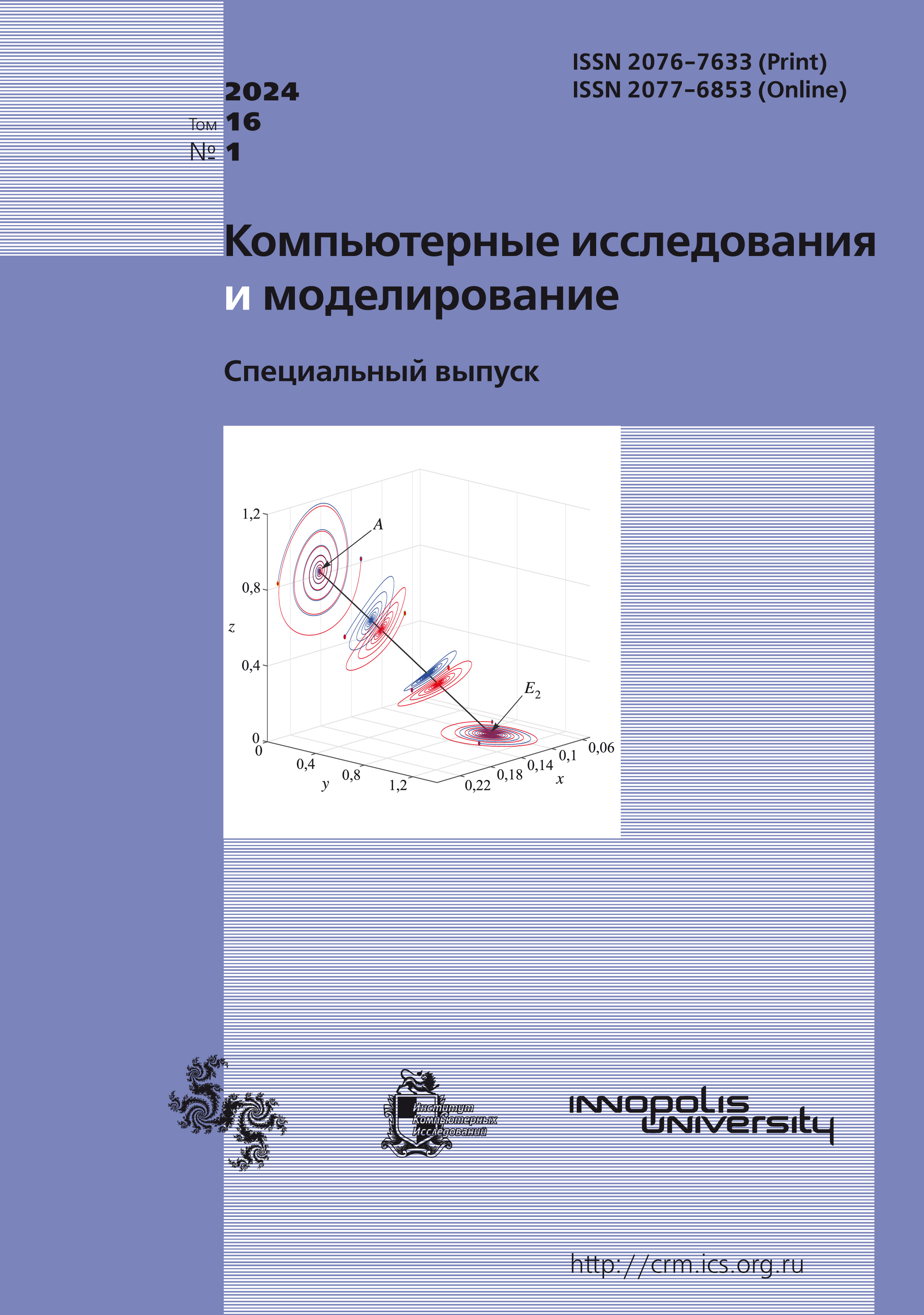All issues
- 2025 Vol. 17
- 2024 Vol. 16
- 2023 Vol. 15
- 2022 Vol. 14
- 2021 Vol. 13
- 2020 Vol. 12
- 2019 Vol. 11
- 2018 Vol. 10
- 2017 Vol. 9
- 2016 Vol. 8
- 2015 Vol. 7
- 2014 Vol. 6
- 2013 Vol. 5
- 2012 Vol. 4
- 2011 Vol. 3
- 2010 Vol. 2
- 2009 Vol. 1
Modifications of the Frank –Wolfe algorithm in the problem of finding the equilibrium distribution of traffic flows
 pdf (773K)
pdf (773K)
The paper presents various modifications of the Frank–Wolfe algorithm in the equilibrium traffic assignment problem. The Beckman model is used as a model for experiments. In this article, first of all, attention is paid to the choice of the direction of the basic step of the Frank–Wolfe algorithm. Algorithms will be presented: Conjugate Frank–Wolfe (CFW), Bi-conjugate Frank–Wolfe (BFW), Fukushima Frank –Wolfe (FFW). Each modification corresponds to different approaches to the choice of this direction. Some of these modifications are described in previous works of the authors. In this article, following algorithms will be proposed: N-conjugate Frank–Wolfe (NFW), Weighted Fukushima Frank–Wolfe (WFFW). These algorithms are some ideological continuation of the BFW and FFW algorithms. Thus, if the first algorithm used at each iteration the last two directions of the previous iterations to select the next direction conjugate to them, then the proposed algorithm NFW is using more than $N$ previous directions. In the case of Fukushima Frank–Wolfe, the average of several previous directions is taken as the next direction. According to this algorithm, a modification WFFW is proposed, which uses a exponential smoothing from previous directions. For comparative analysis, experiments with various modifications were carried out on several data sets representing urban structures and taken from publicly available sources. The relative gap value was taken as the quality metric. The experimental results showed the advantage of algorithms using the previous directions for step selection over the classic Frank–Wolfe algorithm. In addition, an improvement in efficiency was revealed when using more than two conjugate directions. For example, on various datasets, the modification 3FW showed the best convergence. In addition, the proposed modification WFFW often overtook FFW and CFW, although performed worse than NFW.
Copyright © 2024 Ignashin I.N., Yarmoshik D.V.
Indexed in Scopus
Full-text version of the journal is also available on the web site of the scientific electronic library eLIBRARY.RU
The journal is included in the Russian Science Citation Index
The journal is included in the RSCI
International Interdisciplinary Conference "Mathematics. Computing. Education"






